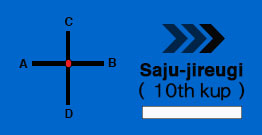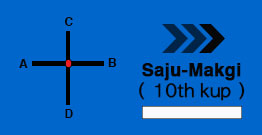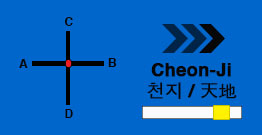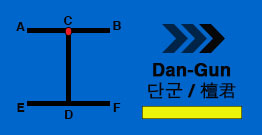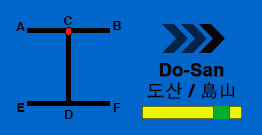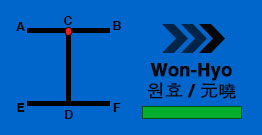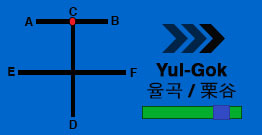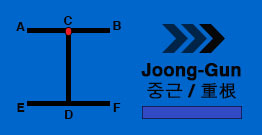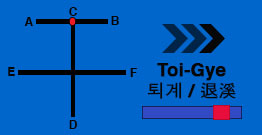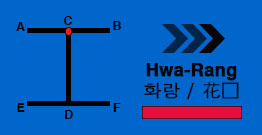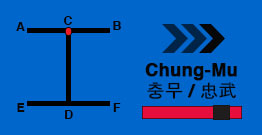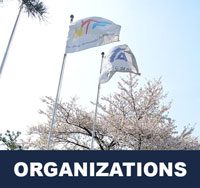Taekwondo 태권도Taekwondo Preschool
Promotion from one geup to the next can proceed rapidly in some schools, since schools often allow geup promotions every two, three, or four months. Students of geup rank learn the most basic techniques first, and then move on to more advanced techniques as they approach first dan. Many of the older and more traditional schools often take longer to allow students to test for higher ranks than newer, more contemporary schools, as they may not have the required testing intervals. View Taekwondo belt levels »
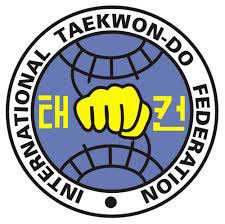
International Taekwondo Federation (ITF)
Two of the most popular systems of taekwondo are named solely after their respective organizations: the World Taekwondo (WT) and the International Taekwon-Do Federation (ITF).
International Taekwon-Do Federation (ITF) is a taekwondo organization founded on Mar 22, 1966, by General Choi Hong Hi (최홍희) in Seoul, South Korea. The ITF exists to promote and encourage the growth of the Korean martial art of taekwondo. After the South Korean Government abandoned the ITF, the government established the World Taekwondo Federation to continue the mission of taekwondo's globalization (The World Taekwondo Federation (WTF) has renamed itself to World Taekwondo (WT) in 2017). Once General Choi Hong Hi was exiled out of South Korea, he returned to North Korea and introduced the organization which settled there.
In 2001, the ITF Congress voted for General Choi Hong Hi as President for four years of the six-year term, then for his son (Choi Jung Hwa) to serve as President for the remaining two years. This was overturned (whether legally or illegally is disputed) by General Choi, causing a rift between himself and his son. Choi Jung Hwa split away from his father and created another organization, which Choi Jung Hwa claimed to be the true ITF.

While the majority of the TKD world stayed with General Choi, many others decided to follow Choi Jung Hwa. General Choi subsequently died in June 2002, having never reconciled with his son. On his deathbed in June 2002, General Choi allegedly said that he wanted a man known as Chang Ung, a North Korean IOC member, to take over as President. An Extraordinary Congress of the ITF was called with Chang Ung declared as the new President; but the legality of this Congress is disputed. Those claiming that the Congress was illegal (i.e. against the ITF's Constitution) held another Congress, at which Master Trần Triệu Quân (an 8th degree black belt) was elected as President. Thus there are now three organizations claiming to be the ITF. ITF's main functions are to coordinate and approve tournaments and seminars, set standards for teaching (patterns, sparring, destruction), collaborate with affiliated member organizations, and service members in regards to rank and certifications.
Theory of Power
This emphasis on speed and agility is a defining characteristic of taekwondo and has its origins in analyses undertaken by Choi Hong Hi. The results of that analysis are known by ITF practitioners as Choi's Theory of Power. Choi's Theory of Power is based on biomechanics and Newtonian physics. For example, Choi observed that the power of a strike increases quadratically with the speed of the strike, but increases only linearly with the mass of the striking object. In other words, speed is more important than size in terms of generating power. This principle was incorporated into the early design of taekwondo and is still used.
Choi also advocated a relax and strike principle for taekwondo; in other words, between blocks, kicks, and strikes the practitioner should relax the body, then tense the muscles only while performing the technique. It is believed that this too increases the power of the technique, by conserving the body's energy. He expanded on this principle with his advocacy of the "sine wave" technique. This involves raising one's center of gravity between techniques, then lowering it as the technique is performed, producing the up-and-down movement from which the term "sine wave" is derived. The "sine wave" is generally practiced, however, only in some schools that follow ITF-style taekwondo. Kukkiwon-style taekwondo, for example, does not employ the "sine wave" and instead advocates a more uniform height during movements.
The Components of the Theory of Power include:
- Reaction Force - the principle that as the striking limb is brought forward, other parts of the body should be brought backward in order to provide more power to the striking limb. As an example, if the right leg is brought forward in a roundhouse kick, the right arm is brought backward to provide the reaction force.
- Concentration - the principle of bringing as many muscles as possible to bear on a strike, concentrating the area of impact into as small an area as possible
- Equilibrium - as previously mentioned, the relatively narrow stances of taekwondo require increased emphasis on maintaining a correct center-of-balance throughout a technique
- Breath Control - the idea that during a strike one should exhale, with the exhalation concluding at the moment of impact
- Mass - the principle of bringing as much of the body to bear on a strike as possible; again using the roundhouse kick as an example, the idea would be to rotate the hip as well as the leg during the kick in order to take advantage of the hip's additional mass in terms of providing power to the kick
- Speed - as previously mentioned however, speed is considered the most important component of developing power in taekwondo.
Patterns
Patterns, or tul (틀) in Korean, originally called hyeong (형), form an important aspect of training in Taekwon-Do. They are equivalent to the kata in karate. The majority of the patterns (except Yul-Gok, Ul-Ji and Tong-Il) start with a defensive move, which emphasizes taekwon-do's defensive nature. All of the patterns start and end at the same location. This ensures that the practitioners' stances are the correct length, width, and in the proper direction.
There are 24 patterns in the official ITF syllabus; this is symbolic of the 24 hours in a day. One additional pattern, Ko-Dang (or Go-Dang), was retired/replaced by Juche in 1986 by General Choi Hong Hi. Ko-Dang and Juche are similar, and some Taekwon-do organizations have renamed Juche to Ko-Dang though most perform the newer pattern. The names of these patterns typically refer either to events in Korean history or to important people in Korean history. Elements of the patterns may also be historical references, such as the number of moves, the diagram, the way the pattern ends, and so on.
Patterns ( tul 틀 ) are performed in accordance with The Encyclopedia of Taekwon-Do in 15 volumes written by General Choi Hong Hi, the latest edition being from 1999 (later editions have been published, but the 1999 editions were the last General Choi Hong Hi was directly involved with). This comprehensive work contains 15 volumes with volumes 8 through 15 dedicated to the 24 patterns and containing descriptions of the pattern movements as well as pictures showing possible applications of some of the movements. There is also the book entitled "The Korean Art of Self Defense" (the 1999 edition, the latest used by ITF under Grandmaster Tran Trieu Quan and ITF under Grandmaster Choi, or the 2004 edition, the latest used by ITF under Chang Ung), also known as the Condensed Encyclopedia, written by General Choi Hong Hi. This is a single condensed encyclopedia of approximately 770 pages with a section dedicated to the 24 patterns.
View more information on International Taekwondo Federation Forms ITF Tul »
There are also three fundamental exercises, named Saju-Jirugi (Four Direction Punch), Saju-Makgi (Four Direction Block) and Saju Tulgi (Four Direction Thrust). Saju-Jirugi and Saju-Makgi are basic defence exercises taught to beginners of the martial art. Saju Tulgi is less well known and is generally taught to 2nd Geup students just prior to Hwa-Rang. Saju Tulgi is not presented in the Condensed Encyclopedia but is present in the 15 Volume Encyclopedia.
The 24 Patterns in Taekwon-Do ITF are:
- Cheon-Ji (19 Movements) 9th geup
- Dan-Gun (21 Movements) 8th geup
- Do-San (24 Movements) 7th geup
- Won-Hyo (28 Movements) 6th geup
- Yul-Gok (38 Movements) 5th geup
- Joong-Gun (32 Movements) 4th geup
- Toi-Gye (37 Movements) 3rd geup
- Hwa-Rang (29 Movements) 2nd geup
- Chung-Mu (30 Movements) 1st geup
- Kwang Gae (39 Movements) 1st dan
- Po-Eun (36 Movements) 1st dan
- Ge-Baek (44 Movements) 1st dan
- Eui-Am (45 Movements) 2nd dan
- Choong-Jang (52 Movements) 2nd dan
- Juche (45 Movements)/Ko-Dang (39 Movements) 2nd dan
- Sam-Il (33 Movements) 3rd dan
- Yoo-Sin (68 Movements) 3rd dan
- Choi-Yong (46 Movements) 3rd dan
- Yon-Gae (49 Movements) 4th dan
- Ul-Ji (42 Movements) 4th dan
- Moon-Moo (61 Movements) 4th dan
- So-San (72 Movements) 5th dan
- Se-Jong (24 Movements) 5th dan
- Tong-Il (56 Movements) 6th dan
The 1 Retired Pattern in Taekwon-Do ITF is:
- Go-Dang (39 Movements)

Related Articles
Original Taekwondo Kwans ( 관 )
In addition to these private organizations, the original taekwondo schools ( 관 kwans ) that formed the organization that would eventually become the Kukkiwon 국기원 continue to exist as independent fraternal membership organizations that support the World Taekwondo (WT) and the Kukkiwon 국기원. The official curriculum of the kwans is that of the Kukkiwon 국기원. The kwans also function as a channel for the issuing of Kukkiwon dan and poom certification (black belt ranks) for their members. View Taekwondo Kwans ( 관 ) »
RESOURCES
This article uses material from the Wikipedia article "International Taekwon-do Federation", which is released under the Creative Commons Attribution-Share-Alike License 3.0.


